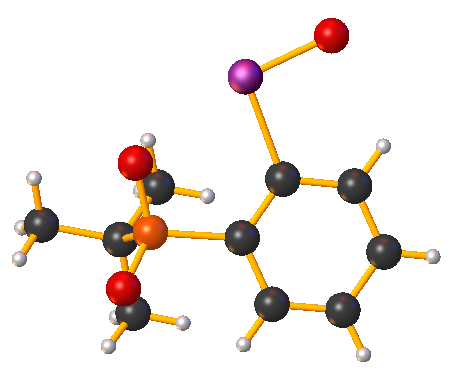Iodosobenzene on:
[Wikipedia]
[Google]
[Amazon]
Iodosobenzene or iodosylbenzene is an

organoiodine compound
Organoiodine compounds are organic compounds that contain one or more carbon–iodine bonds. They occur widely in organic chemistry, but are relatively rare in nature. The thyroxine hormones are organoiodine compounds that are required for he ...
with the empirical formula
In chemistry, the empirical formula of a chemical compound is the simplest whole number ratio of atoms present in a compound. A simple example of this concept is that the empirical formula of sulfur monoxide, or SO, would simply be SO, as is th ...
. This colourless solid compound is used as an oxo transfer reagent
In chemistry, a reagent ( ) or analytical reagent is a substance or compound added to a system to cause a chemical reaction, or test if one occurs. The terms ''reactant'' and ''reagent'' are often used interchangeably, but reactant specifies a ...
in research laboratories examining organic and coordination chemistry
A coordination complex consists of a central atom or ion, which is usually metallic and is called the ''coordination centre'', and a surrounding array of bound molecules or ions, that are in turn known as ''ligands'' or complexing agents. Many ...
.
Preparation and structure
Iodosobenzene is prepared fromiodobenzene
Iodobenzene is an organoiodine compound consisting of a benzene ring substituted with one iodine atom. It is useful as a synthetic intermediate in organic chemistry. It is a volatile colorless liquid, although aged samples appear yellowish.
Prepa ...
. It is prepared by first oxidizing iodobenzene by peracetic acid
Peracetic acid (also known as peroxyacetic acid, or PAA) is an organic compound with the formula CH3CO3H. This peroxy acid is a colorless liquid with a characteristic acrid odor reminiscent of acetic acid. It can be highly corrosive.
Peracetic a ...
. Hydrolysis of resulting diacetate affords "PhIO":
:
:
The structure of iodosobenzene has been verified by crystallographically. Related derivatives are also oligomeric. Its low solubility in most solvents and vibrational spectroscopy
Infrared spectroscopy (IR spectroscopy or vibrational spectroscopy) is the measurement of the interaction of infrared radiation with matter by absorption, emission, or reflection. It is used to study and identify chemical substances or function ...
indicate that it is not molecular, but is polymeric, consisting of –I–O–I–O– chains. The related diacetate, , illustrates the ability of iodine(III) to adopt a T-shaped geometry without multiple bonds.
Theoretical studies show that the bonding between the iodine and oxygen atoms in iodosobenzene represents a single dative I-O sigma bond, confirming the absence of the double I=O bond.
A monomeric derivative iodosylbenzene is known in the form of 2-(tert-butylsulfonyl)iodosylbenzene, a yellow solid. C-I-O angle is 94.78°, C-I and I-O distances are 2.128 and 1.848 Å.

Applications
Iodosobenzene has no commercial uses, but in the laboratory it is employed as an "oxo-transfer reagent." It epoxidizes certain alkenes and converts some metal complexes into the corresponding oxo derivatives. Although it is an oxidant, it is also mildly nucleophilic. These oxo-transfer reactions operate by the intermediacy of adducts PhI=O→M, which release PhI. A mixture of iodosobenzene and sodium azide inacetic acid
Acetic acid , systematically named ethanoic acid , is an acidic, colourless liquid and organic compound with the chemical formula (also written as , , or ). Vinegar is at least 4% acetic acid by volume, making acetic acid the main component ...
converts alkenes to vicinal diazides:.
:
Safety
This compound is explosive and should not be heated under vacuum.See also
* Dess-Martin reagentReferences
{{Reflist Iodanes Phenyl compounds Inorganic polymers Reagents for organic chemistry